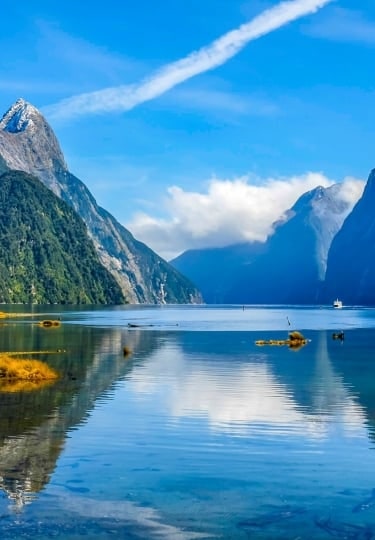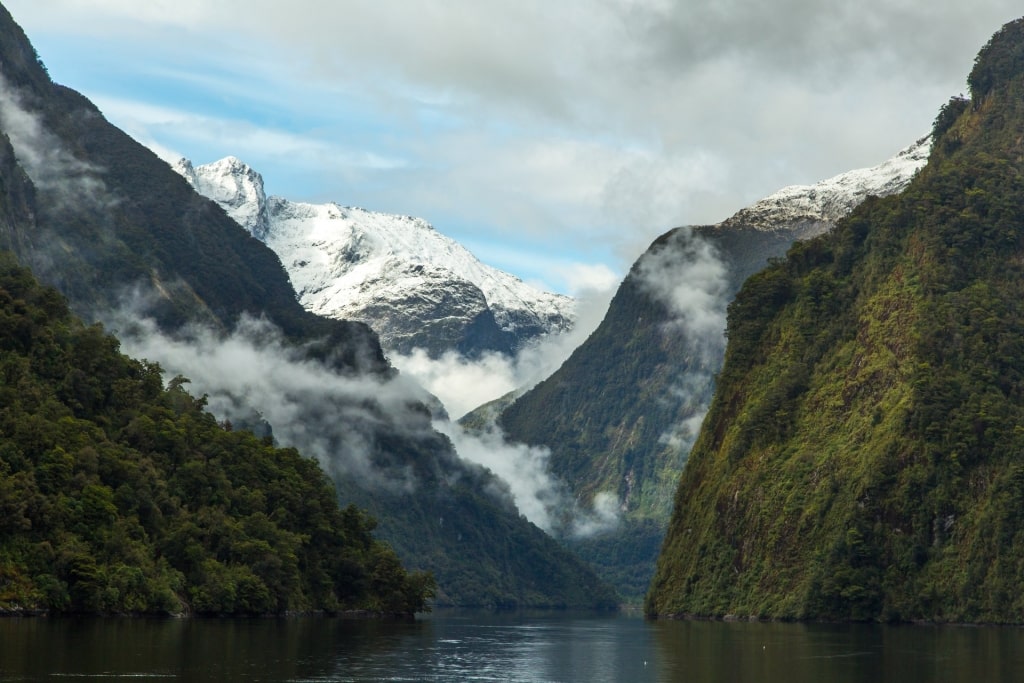When you hear the word “fjord,” you probably think of Alaska, Iceland, and Norway. However, New Zealand’s fjords are some of the most breathtaking natural wonders in the world.
For those unfamiliar with these phenomenons, fjords are narrow inlets of water surrounded by dramatic cliffs. They were formed thousands of years ago when receding glaciers carved out the terrain and left these stunning underwater valleys in their wake.
In Norwegian, the word “fjord” means “where one fares through,” and that’s exactly what you’ll do on a cruise through these beautiful bodies of water.
While New Zealand’s fjords are similar in geography to those found throughout the rest of the world, the key difference between them is that in New Zealand they are referred to as “fiords” instead of fjords. And while they have a slightly different spelling, they have similarly impressive landscapes.
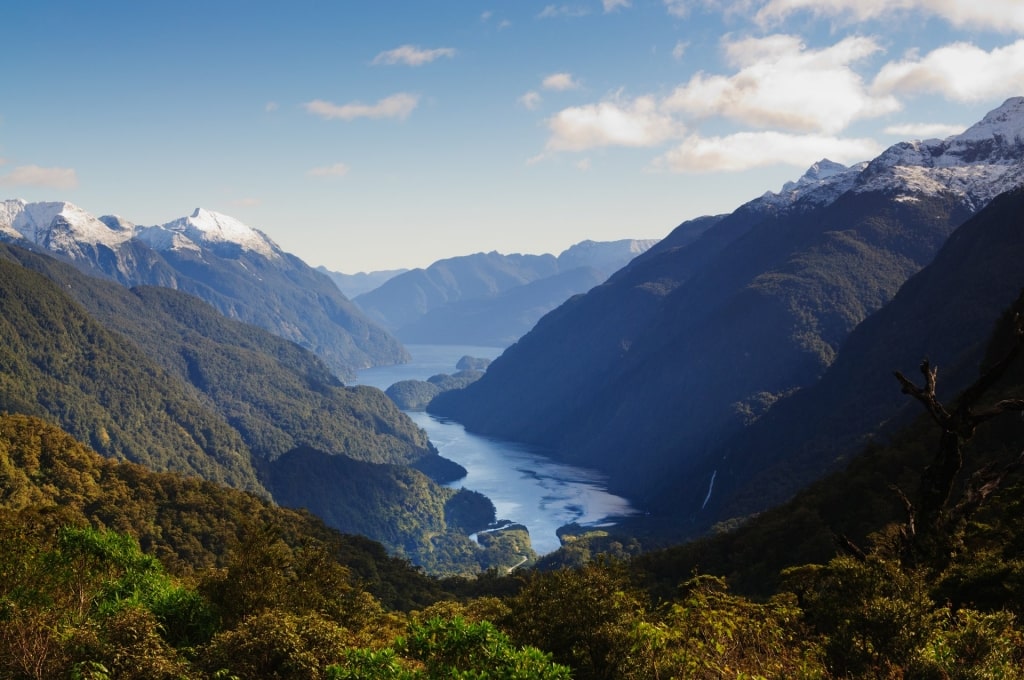
Doubtful Sound
Fantastically deep and hemmed in by towering cliffs, New Zealand’s majestic fjords are all found in the southwestern nook of the nation. The region is home to one of the country’s largest nature and wildlife reserves, Fiordland National Park.
A massive nature wonderland, Fiordland National Park offers some of New Zealand’s most jaw-dropping vistas, including towering waterfalls, majestic cliffs, and untouched rainforest.
On a New Zealand cruise, you can visit three of the most spectacular fjords in Fiordland National Park: Milford Sound, Dusky Sound, and Doubtful Sound. (All three were mistakenly labeled as sounds by British explorers, but in reality, all of them are considered fjords.)
Here are some of the highlights and wildlife you’ll find at each of these stunning destinations.
Milford Sound
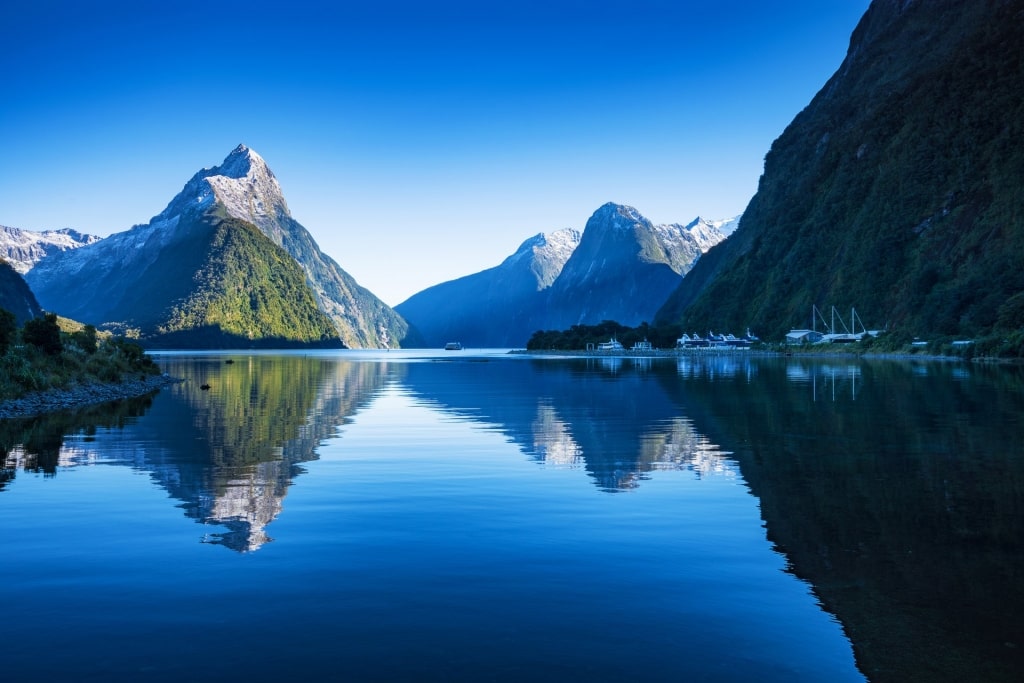
Milford Sound
You’ll feel like you’ve entered another world once you sail into Milford Sound, one of New Zealand’s most beautiful landmarks.
As you glide into the serene, narrow passage surrounded by steep, lush cliffs and magnificent waterfalls, you’ll find it hard not to stare in awe. It’s one of those once-in-a-lifetime experiences you’ll treasure long after your trip.
As part of Te Wahipounamu, a UNESCO World Heritage Site, Milford Sound is a naturally protected habitat that was once described as “the eighth wonder of the world” by Rudyard Kipling, author of The Jungle Book.
Towering over Milford Sound, you’ll see Mitre Peak, which rises over 5,000 feet above the water. Mitre Peak is easy to spot from around the sound and earned its name because of its distinctive cone-shaped crest, which bears a resemblance to a bishop’s hat or mitre. Mitre Peak is one of the most famous mountains in New Zealand and offers an ideal backdrop for picture-perfect memories.
During your cruise through Milford Sound, you’ll be able to spot a variety of rare birds and other unique wildlife that can only be found in Fiordland’s wet, damp weather.
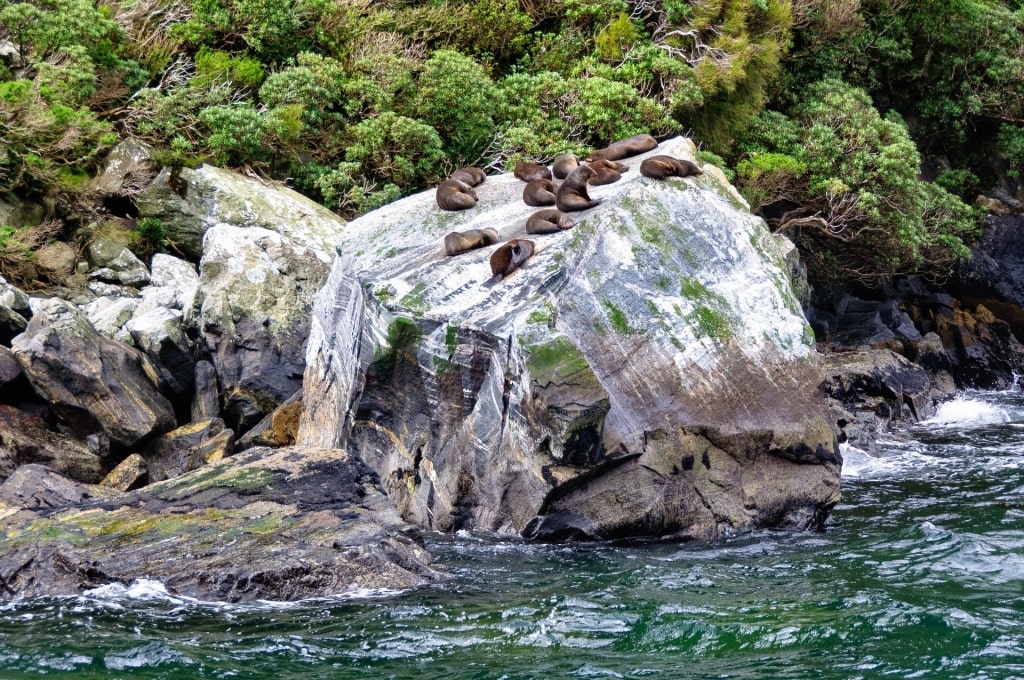
Fur seals in Milford Sound
Watch fur seals and bottlenose dolphins in their natural habitats. Look out for Kea, the only alpine parrot in the world, as well as the endangered South Island takahē bird and the Fiordland Crested Penguin, one of the rarest breeds of penguins in the world.
This natural reserve is also home to some of the oldest plant species in New Zealand, including groves of Southern Beech trees that are nearly 1,000 years old.
Dusky Sound
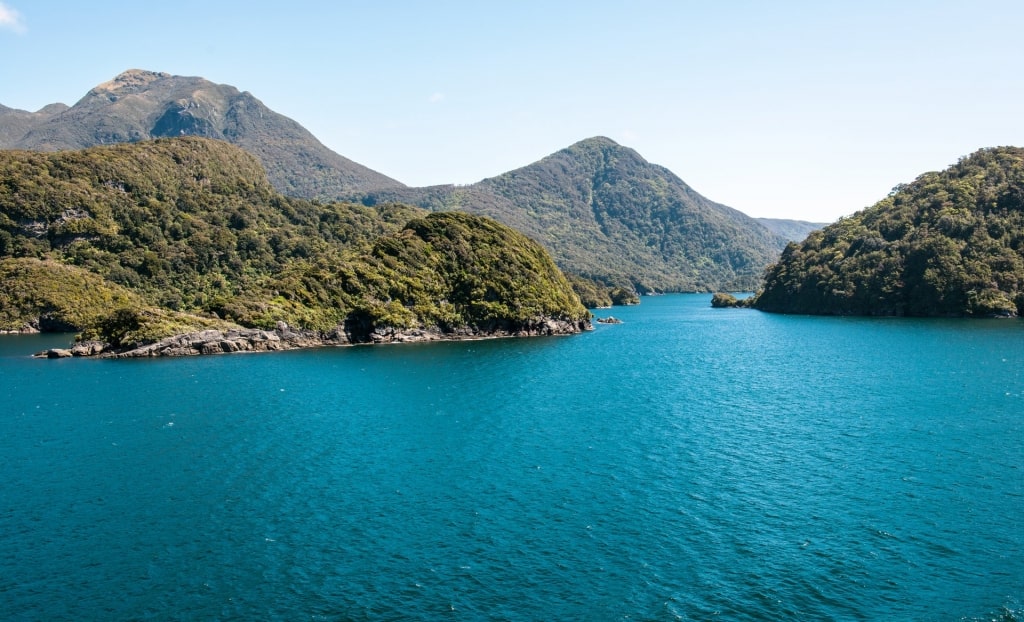
Dusky Sound
Spanning almost 25 miles long, Dusky Sound is one of New Zealand’s largest fjords on the coast. Remote and virtually inaccessible via land, Dusky Sound was named after Captain James Cook sailed on his first voyage through the sound in 1770 at dusk. (At Astronomer’s Point, you can still see the spot Cook used as an observatory.)
Cruising through Dusky Sound, you’ll encounter sunbathing seals on top of craggy rocks and humpback whales splashing in the calm waters. Pass by islands including Resolution Island, the largest in Fiordland park.
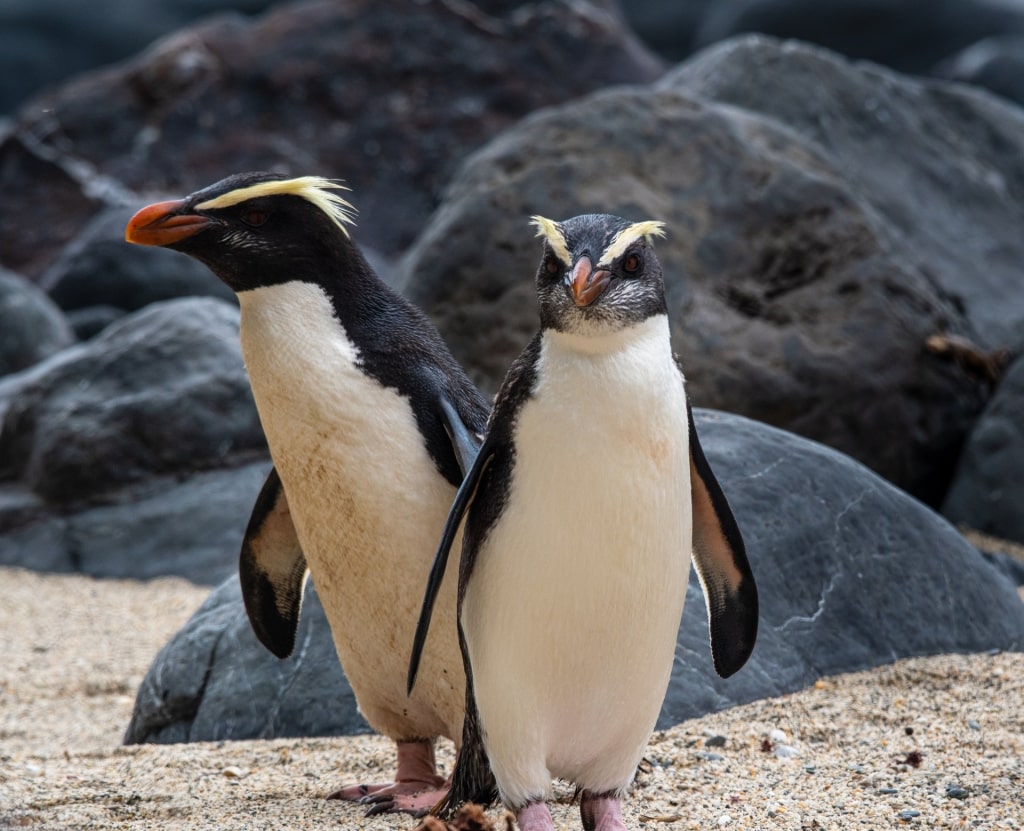
Fiordland penguin in Dusky Sound
Dusky Sound is an important habitat for the endangered Crested Fiordland penguins, who are known for the yellow eyebrows that fan out from the top of their heads. Some of the best birdwatching in New Zealand can be found in this remote valley, and during a cruise through the sound, you’ll have ample opportunities to spot broad-billed prions, mottled petrels, and other rare species unique to New Zealand as they soar overhead.
Doubtful Sound
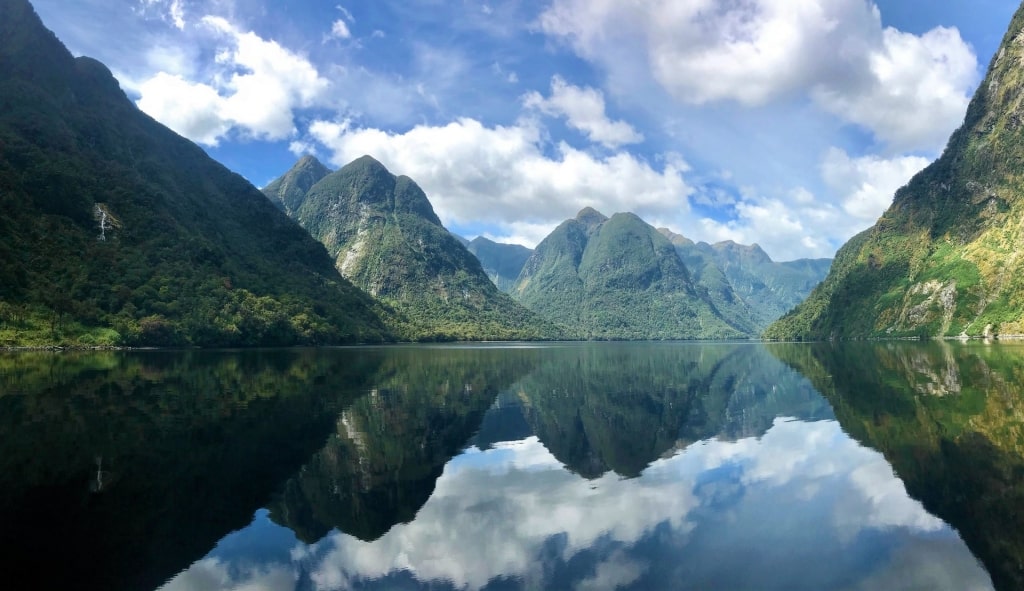
Doubtful Sound
Doubtful Sound is one of the most pristine and untouched nature preserves in the world. Over 1,300 feet deep, Doubtful Sound is the deepest of New Zealand’s South Island fjords, but it’s also quite narrow. Its name also came from Captain Cook, who avoided sailing into it because he doubted whether it was wide enough to pass.
Read: Things to Do on New Zealand’s South Island
Often referred to as “The Sound of Silence,” it’s one of the most serene places you’ll ever visit. Savor the quiet journey and marvel at the stillness around you. The only noises you’ll hear while sailing through Doubtful Sound will be cascading waterfalls, the occasional bark from a New Zealand fur seal, or the hustle of a group of Fiordland penguins as they make their way to the water.
On our New Zealand and Australia cruise itineraries that visit Fiordland National Park, you’ll sail through all three of these fjords on the same day.
The epic heights and plunging depths of New Zealand’s fjords are so mesmerizing, not even the best photographs or movies can do the natural park justice—you have to witness its magic in person. They’re just one more reason to go visit, explore, and experience the natural splendor of this region.
If you’re ready to experience the majesty of New Zealand’s fjords, book your cruise to New Zealand today. Browse itineraries online or call 1-800-852-8086 and speak to one of our travel experts to help you book your next cruise today.
